The Best Postpartum Workouts for New Moms
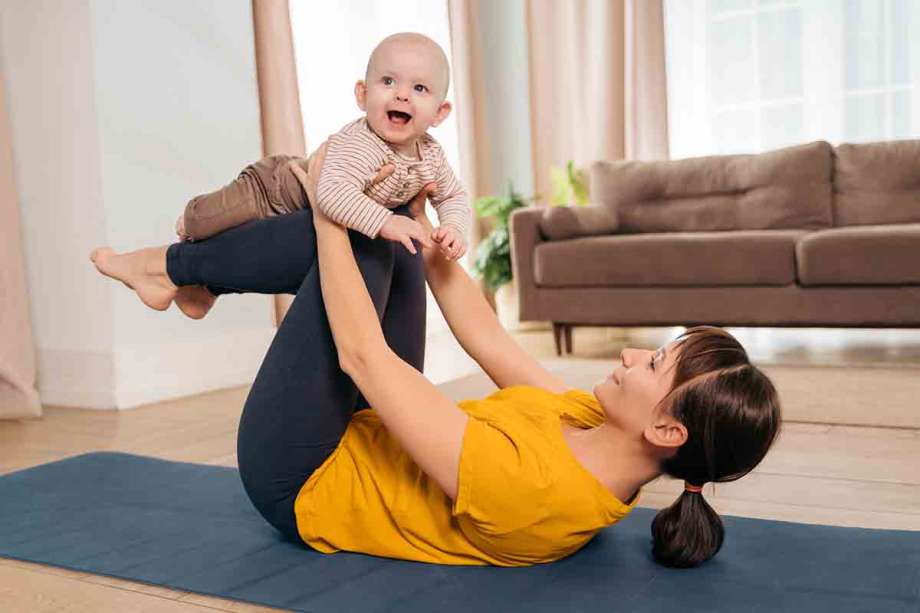
After giving birth, many new moms want to get back to working out as quickly as possible to lose the baby weight. But you don’t want to rush into exercise after pregnancy because you could end up doing more harm than good. You not only have a little one to take care of now, but you also want to give your body time to heal. Any postpartum workout for a new mother should be doctor approved since every woman is going to be different post-pregnancy.
We’re going to take a look at when it’s safe to exercise after giving birth and what exercises are good for new moms as they start their postpartum fitness journey.
When is it Safe to Exercise After Giving Birth?

There is no one answer to this question. According to the American College of Obstetricians and Gynecologists, if you had a healthy pregnancy and a normal vaginal delivery, you should be able to start exercising soon after giving birth. It’s usually safe to begin exercising a few days after giving birth or when you feel ready.
Meagan Corrao, Physical Therapist at Northwell Health Rehabilitation Network in Huntington, New York, tells Family Education that some women may want to delay their workout start time.
“If you had an assisted birth, or if you had a cesarean delivery or other complications such as diastasis recti or severe vaginal tears, you’ll need to work with your doctor to determine a timeline for when it’s safe to begin exercise again,” says Corrao.
Corrao advises that women should begin slowly and increase exercise gradually to avoid dehydration, especially if they’re breastfeeding.
It’s also important to keep structural and hormonal changes in mind. Those changes are not going to go away the minute you give birth. If a woman overdoes it in the exercise department, it could result in urine or feces leakage, pelvis discomfort, joint pain, and even injury says Corrao.
According to the U.S. Department of Health and Human Services Physical Activity Guidelines for Americans, women should get at least 150 minutes of moderate-intensity aerobic activity per week during pregnancy and the postpartum period. The 150 minutes should be spread out during a week.
While women can start exercising after having a baby, it’s usually not recommended or feasible for women to go back to their normal exercise routine right away, especially if they were hitting the gym hard before they were pregnant. Corrao tells Family Education that it is recommended to wait until your six or eight-week postnatal check before starting a more advanced exercise program or returning to the gym. Of course, consult your doctor before beginning any postnatal workouts.
What are the Benefits of Exercise for Postpartum Women?

Besides reducing bodyweight, women can get other benefits from exercising after they’ve had a baby. The American College of Obstetricians and Gynecologists reports that these include:
- An energy boost
- Better sleep
- Stronger abdominal muscles
- Stress relief
- May help reduce postpartum depression
These benefits can be a great incentive to start a postpartum fitness routine.
What Are Good Exercises to Do After Giving Birth?
When you’re thinking about exercising after giving birth, you don’t need to reinvent the wheel. Your post-baby exercise program should start with the basics. Many times, keeping it simple is the best and safest bet for weight loss. Check out these ideas to help you get moving and develop a fitness routine that suits your body and your lifestyle.
Walking
Never underestimate the power of walking. Corrao says walking will benefit your cardiovascular and musculoskeletal systems as well as improve your mental and emotional state and sleep. Aim to stay active with low-intensity walking for up to 30 minutes a day. If you can’t fit it in all at once, you can break it up throughout the day. You can do this after birth when you feel up to it.
Corrao also suggests the following exercises.
Diaphragmatic Breathing
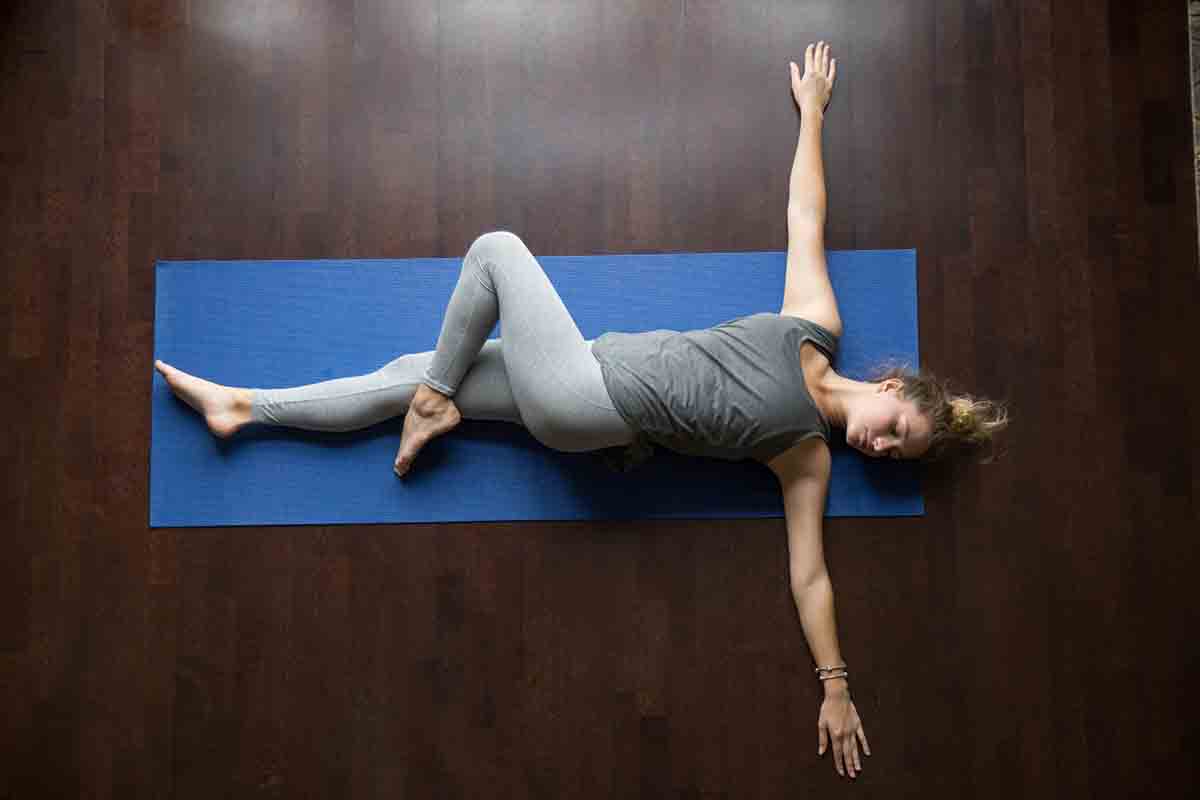
Begin in a supine position (on your back) with your legs extended straight out and your arms relaxed by your side. Inhale deeply and feel like you are drawing your breath into the small of your back. You should feel the ribcage expand 360 degrees. Then exhale all the air out as you gently let everything contract back in. This type of breathing can help to lower stress.
Pelvic Tilts
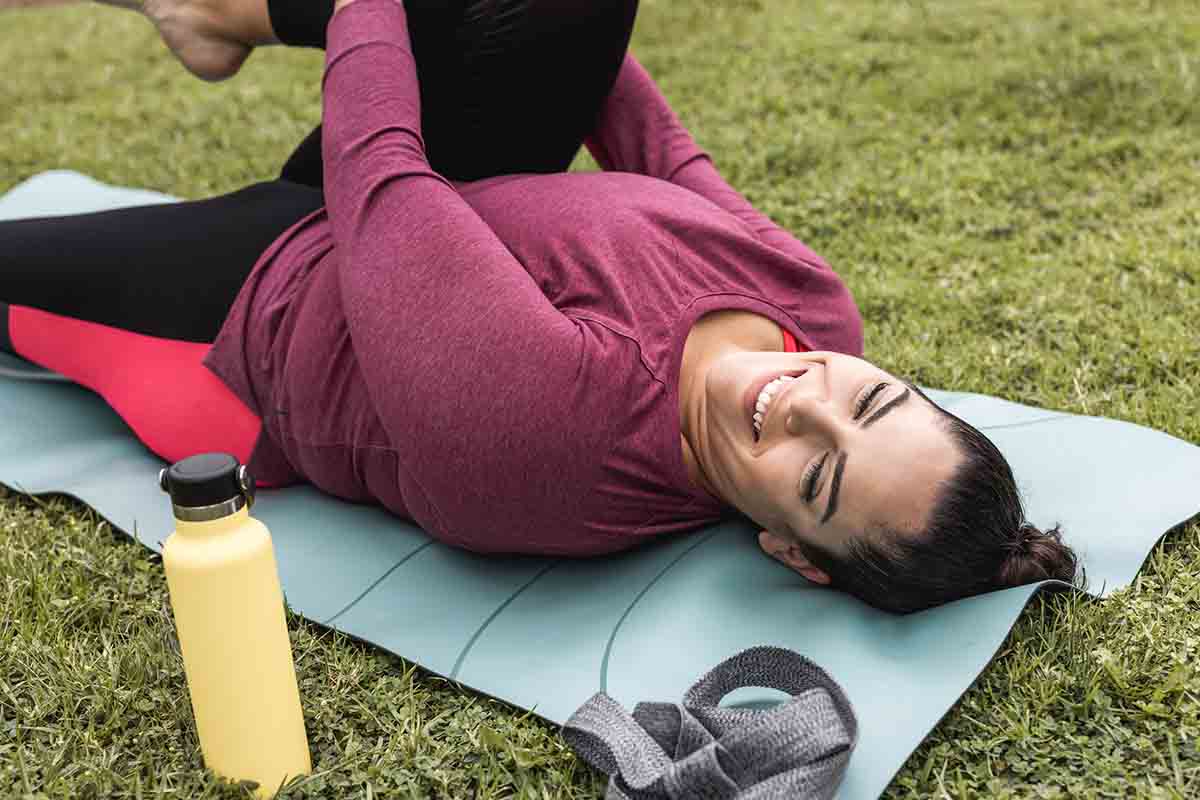
Lie on your back on the floor with your knees bent. Flatten your back against the floor by tightening your abdominal muscles and bending your pelvis up slightly. Hold for up to 10 seconds. Repeat five times and work up to 10 to 20 repetitions. Pelvic tilts can help to strengthen abdominal muscles and relieve lower back pain.
Kegel Exercises
Use this exercise to tone your pelvic floor muscles, which support the uterus, bladder, small intestine, and rectum. When practiced regularly, Kegel exercises can help reduce urinary and anal incontinence. Contract your pelvic floor muscles, as if you're attempting to stop urinating midstream. Hold for up to 10 seconds and release, relaxing for 10 seconds between contractions. Aim for at least three sets of 10 repetitions a day. Avoid Kegel exercises when urinating.
Cat Cow
Begin on all fours with your shoulders stacked directly above your hands and your hips stacked directly above your knees. Arch your back up, draw your navel in, and let your head hang to cat. Then press your belly toward the ground and bring your head and gaze to the sky to cow. Repeat this, alternating cat and cow, for 10 reps. This exercise helps to stretch the hips, abdomen, and back.
Besides those five exercises, here are some other exercise ideas to think about.
Glute Bridge
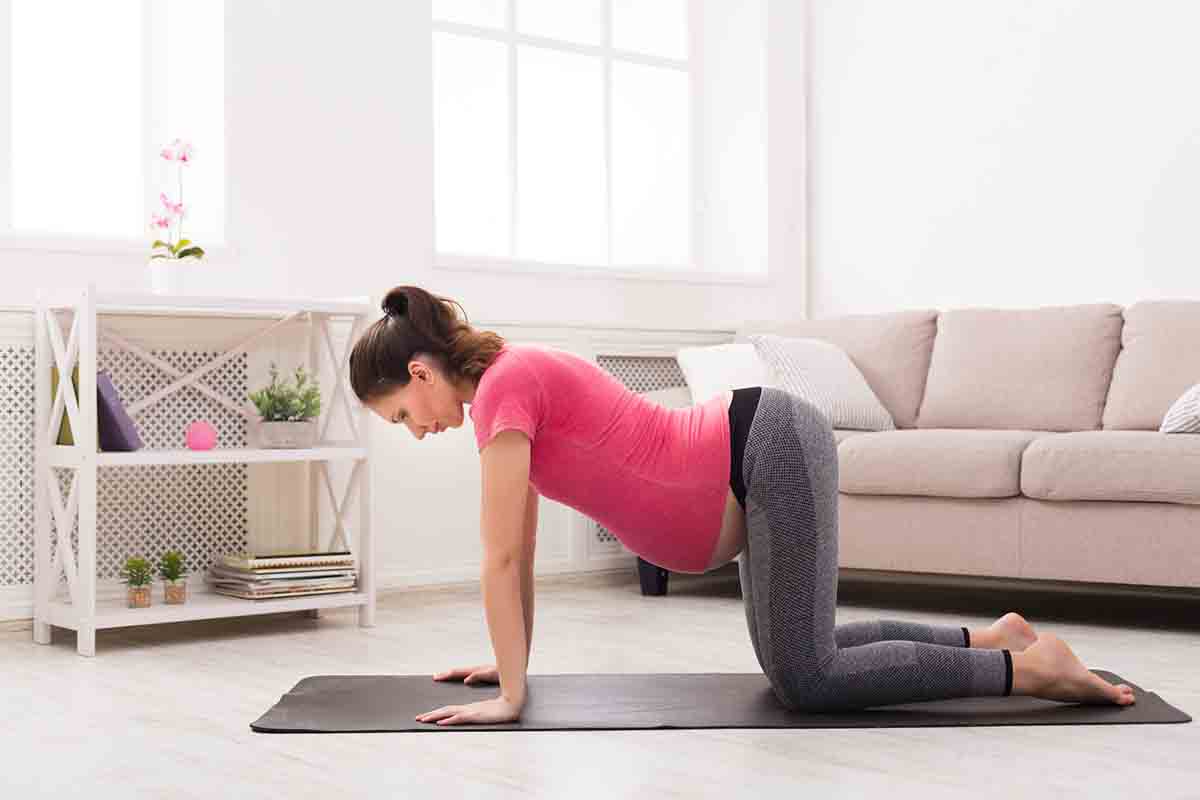
Glute bridges are good for building core stability and building glute strength. Start by lying on your back with your knees bent. Next, posteriorly tilt your pelvis so that you begin activating your core muscles. Squeeze your butt so that you can extend at the hips. When you’re done, you will have made a straight line stretching from your knees to your shoulders. Hold for 1-2 seconds before slowing lowering your body down.
Squats
If your doctor has said it’s okay for you to squat, you want to take it slow and possibly hold on to a chair for support. Squats burn calories and can help you lose weight. Once you’re ready, keep your feet at least shoulder-width apart or wider. Point your toes outward. Begin squatting by bending at the hips and knees simultaneously. Keep your spine tall and your chest up. Keep your feet flat on the ground and don’t let your heels come off the floor. Make sure your knees are in the same direction that your toes are pointing. Slowly come up and squeeze your butt muscles to finish your squat.
Swimming

Swimming is a good choice if you’re looking for a postpartum cardio workout that doesn’t put pressure on your joints. Swimming is relaxing and can be low-impact. Many women enjoy being in the water to help reduce back pain and other aches.
Gentle Strength Training
If your doctor has given you the green light, you can start some gentle strength training. This type of training can help to tone your muscles and boost your metabolism.
While you could join a gym or hire a personal trainer, there are many exercises you can do at home that require no equipment and just your own body weight as resistance. Keep in mind that if you’ve had a c-section, your doctor may not recommend lifting anything heavier than your baby for up to eight weeks after delivery.
Dumbbell Overhead Tricep Extension
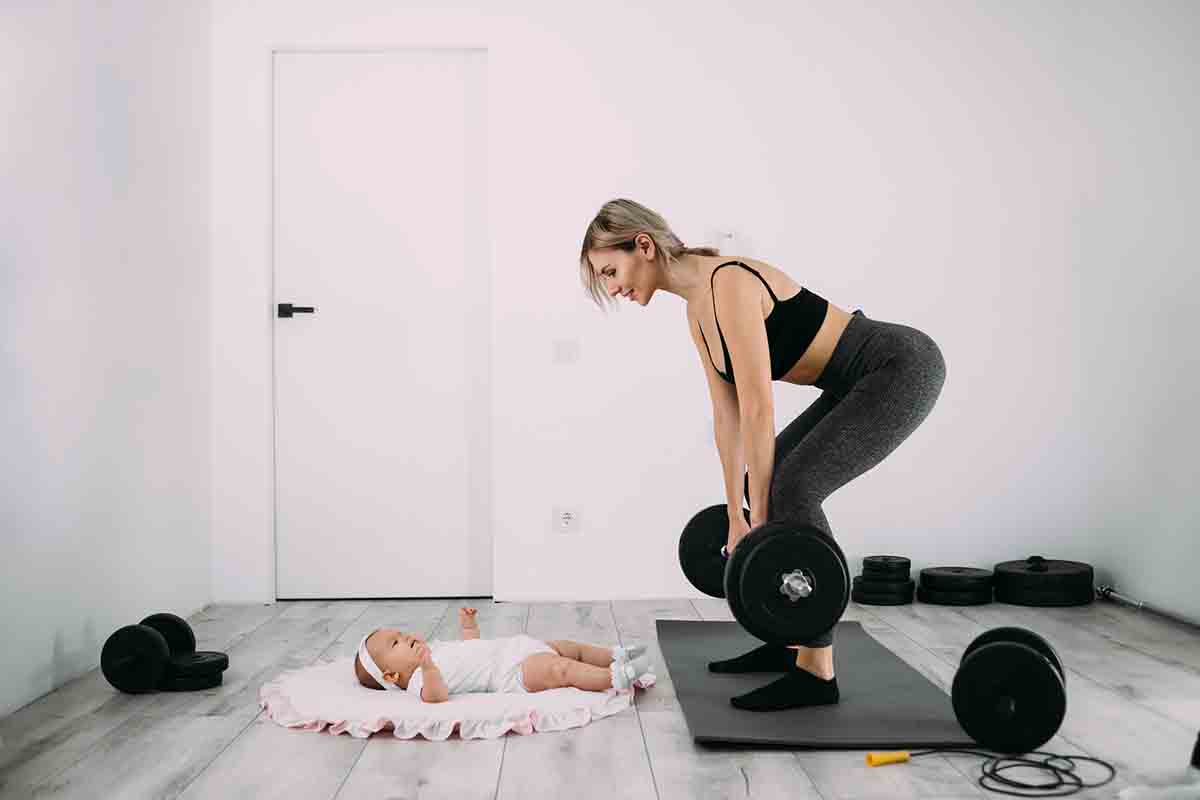
You’re going to need a lot of upper body strength to lift your baby and all of that gear. Tricep extensions can help plus improve the appearance of your arms. Hold a dumbbell overhead by grasping the inside of the dumbbell plate surface with both hands. Slowly bend your elbows and lower the weight behind your head as far as you can. Keep your core muscles engaged and your trunk straight. At the lowest point, straighten your elbows and extend the weight back overhead. Hold this position and then repeat.
The Bottom Line
If you want to know when you can start specific exercises, that’s really going to depend on you and what your doctor advises. Some women may be ready to do squats just a couple of weeks out while others will be told to wait longer.
“When you’ll be able to begin high-intensity exercise varies a lot, but how active you were before and during pregnancy has a big impact on how much exercise you’ll be able to tolerate after you give birth,” says Corrao.
When you’re pregnant, your muscles and ligaments stretch beyond their normal state. This can lead to weakness and instability. Corrao says these tissues can take about 16 weeks to heal, though some women need up to six months for complete healing.
Remember, love your postpartum body and give yourself time. Your body will thank you later!

